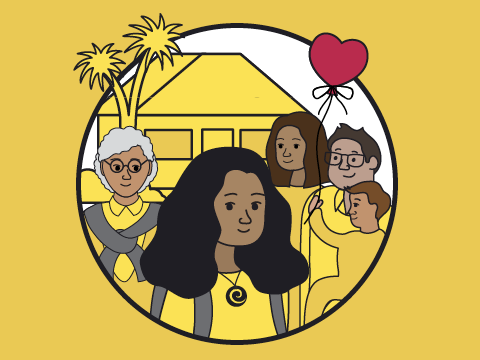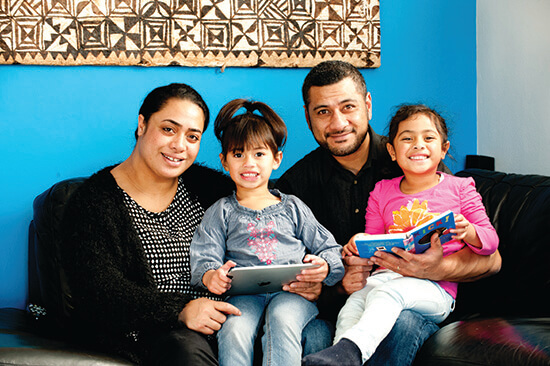Get to know whānau | Te mōhio ki te whānau
Successful relationships occur when whānau engagement is prioritised before, during, and after transitions.
- Why this matters | Te take
- Promote whānau voice | Te reo o te whānau
- Strengthen opportunities to meet that work for whānau | Hui ā-whānau
- Acknowledge cultural and community connections | Ngā hononga ahurea, hapori hoki
- Encourage whānau aspirations | Ngā wawata o te whānau
- Useful resources | He rauemi
On this page:
On this page:
Current page section: Get to know whānau | Te mōhio ki te whānau
Go to top of current page: Get to know whānau | Te mōhio ki te whānau
Go to top of current page: Get to know whānau | Te mōhio ki te whānau
Go to top of current page: Get to know whānau | Te mōhio ki te whānau
- Why this matters | Te take
- Promote whānau voice | Te reo o te whānau
- Strengthen opportunities to meet that work for whānau | Hui ā-whānau
- Acknowledge cultural and community connections | Ngā hononga ahurea, hapori hoki
- Encourage whānau aspirations | Ngā wawata o te whānau
- Useful resources | He rauemi
"Kia kotahi te hoe i te waka, kia ū ki uta"
In order to reach the shore we need to row in unison.
Why this matters | Te take
Why this matters | Te take
Engage with whānau several months before the move from one education setting to the next. This presents an opportunity for valuable insight and a shared vision.
"He waka eke noa"
We’re all in this together.

Source: Ministry of Education | Te Tāhuhu o te Mātauranga
Promote whānau voice | Te reo o te whānau
Promote whānau voice | Te reo o te whānau
Whānau will come with many differing experiences of inclusion and exclusion in education for themselves and their child, which will make them eager to partner with settings or anxious and fearful about further rejection.
Frian Wadia MNZM (Parent/Early Intervention Specialist/Facilitator)
Strengthen opportunities to meet that work for whānau | Hui ā-whānau
Strengthen opportunities to meet that work for whānau | Hui ā-whānau
- Ask whānau how they would like to meet and greet members of their new school. What works for one family may not work for another (rangatiratanga).
- Arrange one-on-one meetings with classroom kaiako and support staff in a way that suits whānau.
- Connect whānau with existing parent networks or support groups, if applicable.
- Offer school visits at different times of the day.
Acknowledge cultural and community connections | Ngā hononga ahurea, hapori hoki
Acknowledge cultural and community connections | Ngā hononga ahurea, hapori hoki
- Ask yourself: Are the child's cultures, languages, and identities visible in the classroom or in the school? If not, what can be done to be more inclusive?
- Connect the transitioning whānau with existing cultural groups in your setting to build a sense of belonging.
- Host events that connect and enhance cultural ties and community.
- Is there a parent buddy system to help new parents feel comfortable in the new setting? Are they culturally safe? Some parents feel disconnected from education and this can be a barrier. How can you build belonging?
- Invite whānau and ākonga to participate in events and celebrations.
- Ask how whānau can find out more about you and your values in teaching and learning.
Encourage whānau aspirations | Ngā wawata o te whānau
Encourage whānau aspirations | Ngā wawata o te whānau
What aspirations do whānau have for their tamariki? Is there a vision for success? How is this connected to their journey?

Source: Ministry of Education | Te Tāhuhu o te Mātauranga
Useful resources | He rauemi
Useful resources | He rauemi

Whānau connections guide
Use this printable guide to help gather valuable information about what matters to whānau.
Publisher: Ministry of Education NZ
Download DOCX (31 KB)

Listen to what matters to whānau
Research from Tātai Aho Rau Core Education, in partnership with Rātā Foundation, outlines their aim to create effective transitions that are whānau-led. Watch the positive outcomes of this project here.
Publisher: Tātai Aho Rau Core Education
Next steps
More suggestions for implementing the strategy “Nurture whānau partnerships | Whanaungatanga”:
-
Current page Get to know whānau | Te mōhio ki te whānau
Return to the guide “Te Ara Ako – Learning pathways in times of change”
How to use this site
Guide to Index of the guide: Te Ara Ako – Learning pathways in times of change
Understand:
Strategies for action:
-
Nurture whānau partnerships | WhanaungatangaShow suggestions for Nurture whānau partnerships | Whanaungatanga
-
Develop ākonga partnerships | Te mahi tahi me ngā ākongaShow suggestions for Develop ākonga partnerships | Te mahi tahi me ngā ākonga
-
Prepare your environment | Te whakarite wāhi akoShow suggestions for Prepare your environment | Te whakarite wāhi ako
-
Working as a team | He whānau kotahi tātouShow suggestions for Working as a team | He whānau kotahi tātou

